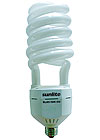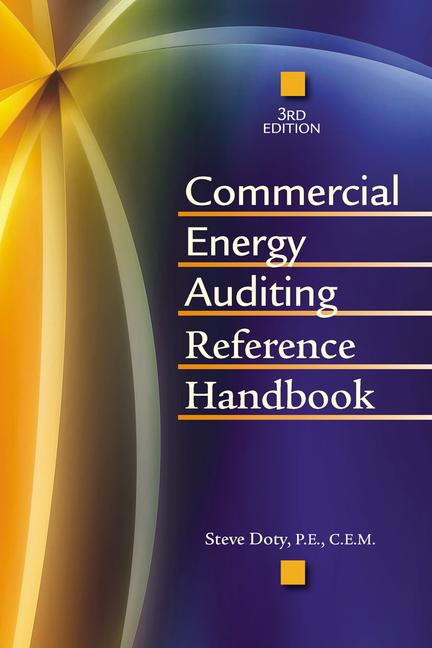
An example of an 85W CFL equivalent to a 300W incandescent.
(Photo courtesy of GoodMart.com.)
Efforts to eliminate standard screw-in incandescent lamps are afoot in California, China, Australia, and Ontario, with screw-in compact fluorescent lamps (CFLs) as the primary alternative. CFLs provide the same light but pull only a fraction (1/4 to 1/3) of the wattage of incandescents, and they typically last 5 to 10 times longer. But care is needed when making such conversions.
CFL's Have Come A Long Way
If you haven’t looked at CFLs in the last few years, it’s definitely time to do so. Units now fit easily into many incandescent fixtures, with outputs equivalent up to a 300W incandescent. Screw-in units have built-in electronic ballasts that weigh little, start immediately, and quickly reach full output at room temperature. Hum, hiss, and flicker are gone, and most CFLs have acceptable or good power quality. Prices have dropped (six packs of 15W units are available at some retail outlets for under $12), and several color temperature choices are available.Even historical and decorative light fixtures (e.g., small sconces, chandeliers) are no longer immune to upgrading. MaxLite and other lamp manufacturers offer mini-candelabra-based CFLs in a pseudo-flame incandescent shape (itself a throwback to mimic the flame of gas lighting). For a quick wrap-up on CFLs, go towww.energystar.gov/index.cfm?c=cfls.pr_cfls.
Where Screw-in CFL's May Not Make Sense
Track lights may be a poor choice for switching to CFLs due to the need to focus light output. The internal reflectors of such fixtures are designed to work with a small incandescent filament source rather than the relatively dispersed output of tubular CFLs. Reflector-style CFL lamps also have a tough time providing beams as tightly focused as most incandescent R (i.e., reflector) or AR (i.e., aluminum reflector) lamps.CFLs in open fixtures may not work well outdoors in cold climates. Fluorescent light output is a function of lamp temperature (output falls at much above or below an optimal temperature), so CFLs may start slow (or not at all) and never reach full output under such conditions. Special low-temperature units are available (e.g., for cold food cases) but are more expensive and choices are limited.
In situations where motion sensors control lighting, the time for CFLs to reach full output (while usually less than a minute) may result in complaints if occupants were instead accustomed to the quick full output of incandescents. While much better than early preheat-start CFLs that burned out quickly when used with sensors, even electronically ballasted CFLs may suffer if frequently started. In such locations, raising the sensor cycle time to 15 or 20 min may greatly extend CFL life.
Emergency lighting (which hopefully never has to be used) should remain incandescent. Lamp life and efficiency during brief emergencies are not an issue, but immediate full output and low installation cost are important.
Where furnishings were purchased and installed based on how they looked under incandescent lighting, switching to CFLs may result in unacceptable aesthetics. Highly finished wood surfaces, for example, may look quite different, depending on the light source used when choosing the stain color. When next remodeled, however, it makes sense to choose fabrics, tile, paint, etc., under fluorescent lighting of the temperature and CRI likely to be used as a result of new energy codes.
In a few cases, museum lighting of artifacts (e.g., artwork) sensitive to UV light may be an issue. While all lamps (including incandescent) emit some UV, bare fluorescents (whether linear or CFL) emit more UV per unit of visible light than do incandescents. Standard acrylic lenses may, however, cut UV output by 80% or more and some types of specialty glass lenses may cut it by over 95%, resulting in lower UV emissions from filtered CFLs than from bare incandescents.
Where dimming below 10% of peak output is required, such as in theaters and auditoriums (where dimming down to 1% is common), no screw-in CFL is yet able to meet that challenge.
When electricity was cheap, some buildings were designed to use their lighting as a winter heating source. In one extreme case, incandescents were used to light and heat hen houses. When the lighting was converted to CFLs, the temperature dropped - and so did egg production. The CFLs went out in the next day’s trash.ES



